12 Ornamental Grasses That Glow in Cool Weather
Ornamental grasses bring texture and movement to gardens, especially as cooler weather sets in. These plants not only survive but thrive as the temperatures drop. With their vibrant hues and graceful forms, they offer a unique contrast to the fall landscape. If you are looking for a way to brighten up your garden this season, ornamental grasses are a fantastic option. Let us take a closer look at some of the best choices to add to your garden.
This post may contain affiliate links, which helps keep this content free. Please read our disclosure for more info.
Blue Fescue (Festuca glauca)

Blue Fescue is a small, evergreen grass that adds a striking blue hue to the garden, especially in cooler weather. This grass forms dense, spiky clumps that shine even during the colder months. It thrives in full sun and well-drained soil, making it a low-maintenance choice for gardeners. Blue Fescue’s cool tones contrast beautifully with the warm colors of fall and winter plants.
This grass reaches about 12 to 18 inches tall, making it perfect for borders or containers. Its fine-textured foliage and blue-green color remain vibrant, even in frost. It pairs well with other low-growing perennials and can handle both drought and cold conditions. Gardeners love its compact size, which allows it to fit into small spaces while still making an impact.
Feather Reed Grass (Calamagrostis x acutiflora)
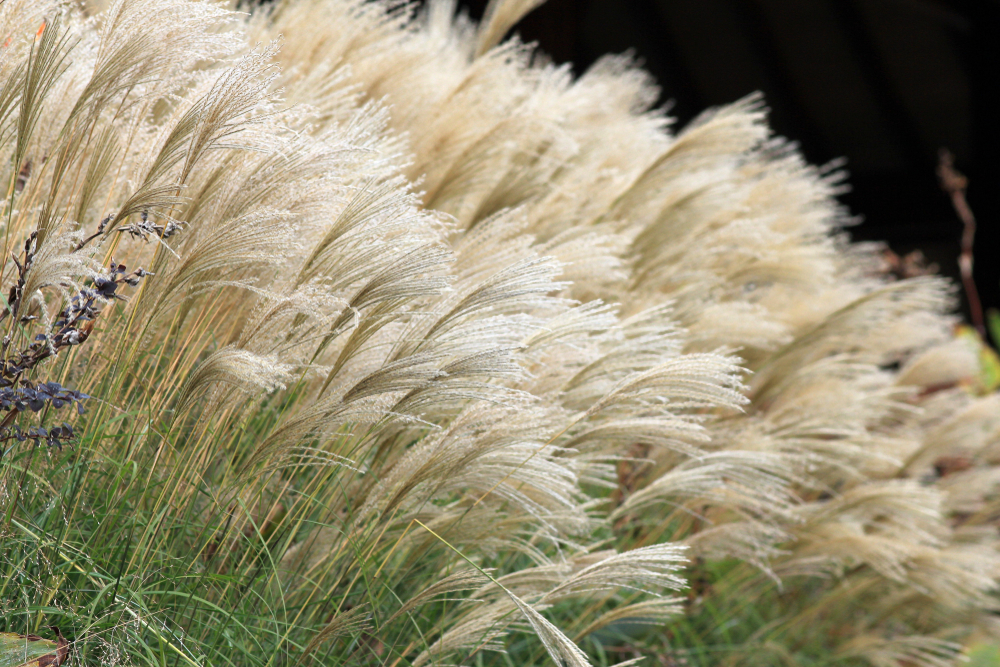
Feather Reed Grass is a tall, upright grass known for its elegant flower heads that glow in cooler temperatures. This perennial is particularly striking in the fall and winter when its feathery plumes catch the light. It can grow up to 4 feet tall, adding height and structure to the garden. Feather Reed Grass thrives in both full sun and partial shade, offering flexibility in placement.
The grass turns a warm, golden color in fall, which looks stunning against frost or snow. Its vertical form makes it a great addition to garden beds or as a privacy screen. Feather Reed Grass is also drought-tolerant once established, making it a low-maintenance option. With its delicate appearance and resilient nature, it is a favorite among gardeners for adding texture and movement.
Japanese Blood Grass (Imperata cylindrica)

Japanese Blood Grass is known for its dramatic red and purple hues, which intensify as temperatures drop. This grass adds a striking splash of color to the cooler months, starting with green in the summer and transitioning to rich crimson in fall. It typically grows between 2 to 3 feet tall, offering a vibrant contrast to other cooler-weather plants. Japanese Blood Grass prefers full sun and well-drained soil, making it ideal for dry, sunny areas.
Its stunning red tips are particularly noticeable during the autumn and winter months. The grass has a clumping growth habit, which can be used to create an eye-catching focal point in garden beds or containers. Japanese Blood Grass is hardy in a variety of climates, and it’s easy to care for once established. Its striking coloration makes it a standout in any garden, especially as the seasons change.
Little Bluestem (Schizachyrium scoparium)
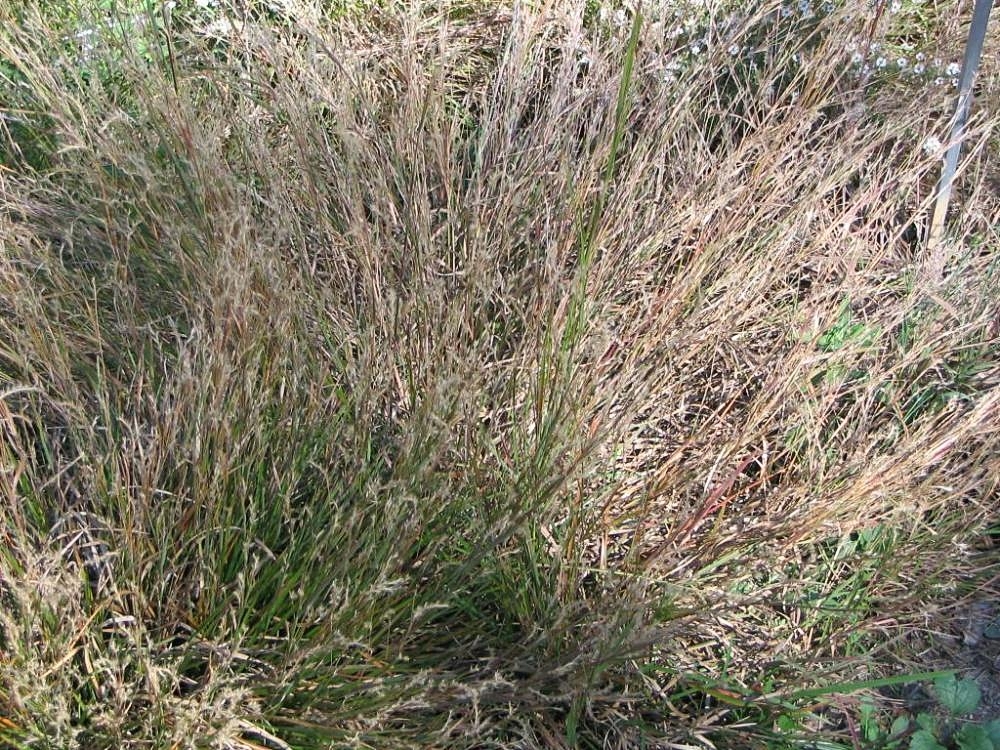
Little Bluestem is a native ornamental grass known for its attractive blue-green foliage that turns coppery orange as the weather cools. This grass grows between 2 and 4 feet tall and has a wispy, airy appearance that adds a soft texture to the garden. It thrives in dry, well-drained soil and full sun, making it a great choice for low-maintenance landscaping. Little Bluestem is also highly drought-tolerant, which makes it ideal for xeriscaping.
In the fall, the leaves take on a beautiful mix of purples, reds, and oranges, providing visual interest well into winter. The grass produces small, silvery flower heads in late summer, adding another layer of texture to the garden. It can be planted in clumps or used as an accent plant, especially in prairie or wildflower gardens. Little Bluestem’s ability to glow in the cool weather makes it a favorite for adding seasonal beauty to landscapes.
Purple Fountain Grass (Pennisetum setaceum)

Purple Fountain Grass is a striking ornamental grass known for its deep burgundy, purple foliage and feathery flower heads. This grass thrives in full sun and produces long, drooping plumes that are particularly eye-catching in the cooler months. It grows around 3 to 4 feet tall, making it a perfect choice for adding height to garden beds or containers. As temperatures drop, its purple tones intensify, creating a dramatic effect.
The grass is well-suited for hot and dry conditions, making it a great choice for areas with full sun exposure. In cooler weather, the fluffy seed heads glow beautifully in the sunlight. Purple Fountain Grass is often used as an accent plant to add texture and movement to garden designs. It also pairs well with shrubs and perennials, offering both color and structure to the garden during fall and winter.
Switchgrass (Panicum virgatum)

Switchgrass is a versatile and durable ornamental grass that adds texture and height to the garden. Known for its arching green blades, it turns a beautiful golden yellow and red in the fall, making it glow in cooler weather. This grass can reach up to 6 feet tall, providing a dramatic backdrop in garden beds or as a screen. Switchgrass is adaptable to a wide range of soil types and light conditions, thriving in both dry and wet areas.
Its airy seed heads are held high above the foliage, creating a soft, wispy effect that remains through the winter months. Switchgrass is also a great choice for attracting wildlife, as it provides cover for birds and insects. Its resilience in different climates and soil conditions makes it a reliable choice for many gardens. The glow it produces in the cooler months, combined with its ease of care, makes it a staple in ornamental grass collections.
Blue Oat Grass (Helictotrichon sempervirens)

Blue Oat Grass is a clump-forming ornamental grass that brings a cool, silvery-blue hue to the garden. This grass glows brightly in the cool weather, with its blue blades providing a stark contrast against the changing autumn landscape. It typically grows about 18 to 24 inches tall, making it perfect for edging or container planting. Blue Oat Grass thrives in full sun and well-drained soil, offering a minimal-care option for gardeners.
In cooler months, the silvery-blue foliage takes on a unique sheen, especially after frost or light snowfall. This grass also produces attractive, airy flower spikes that rise above the foliage in the summer. Blue Oat Grass adds both color and texture to gardens, particularly when paired with other fall perennials. It’s a great addition to modern or minimalist garden designs, where its striking color and form can take center stage.
Miscanthus (Miscanthus sinensis)
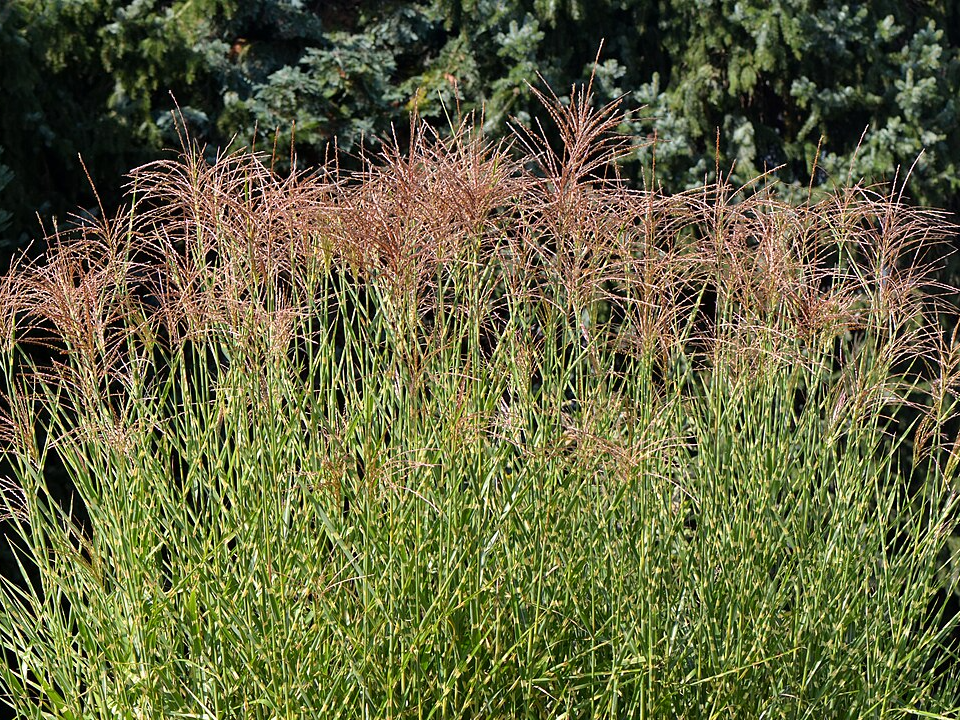
Miscanthus, or Chinese Silver Grass, is a tall ornamental grass that shines in the fall with its feathery flower heads. It is known for its ability to turn golden or coppery hues in cooler weather, adding a glowing effect to the garden. Miscanthus can reach up to 6 feet tall, making it a great choice for creating a privacy screen or backdrop in garden beds. This grass thrives in full sun and can tolerate a range of soil types, making it versatile and easy to grow.
As the weather cools, the flower heads of Miscanthus take on a silvery-white appearance, adding a soft glow to the garden. Its tall, upright form contrasts nicely with shorter plants and can be used to create texture in any landscape. Miscanthus also provides great winter interest, as the seed heads remain intact long after the rest of the garden has faded. It’s perfect for gardeners looking for a bold grass that can handle both heat and cold.
Indiangrass (Sorghastrum nutans)
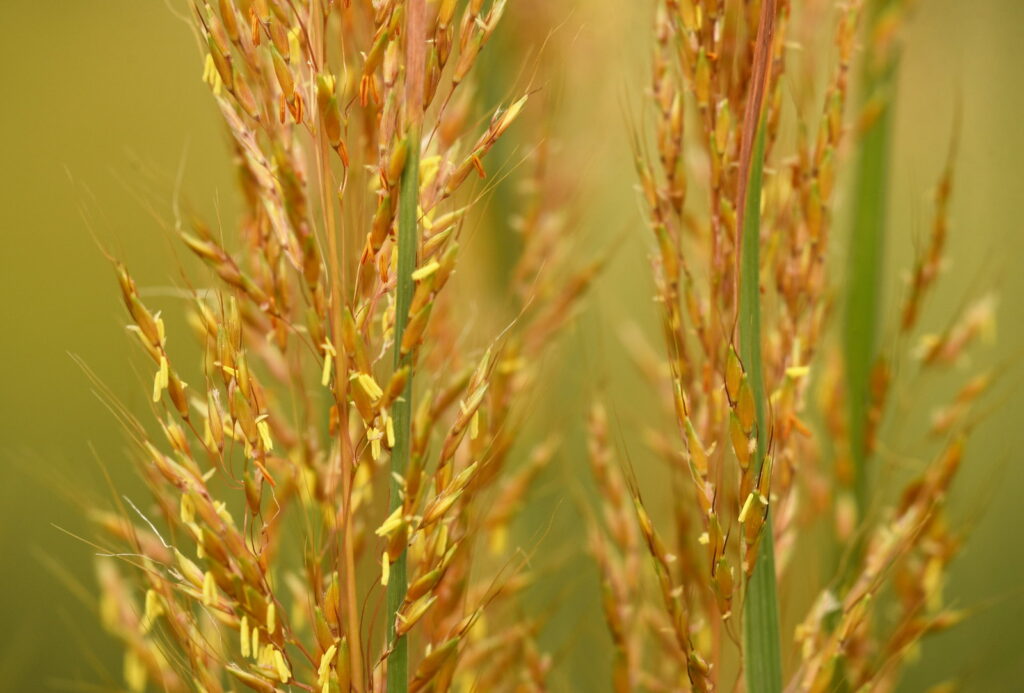
Indiangrass is a native grass known for its warm golden tones that deepen as the weather cools. This tall, upright grass grows between 3 to 5 feet tall, making it an excellent choice for adding height and structure to garden beds. Indiangrass is especially stunning in the fall, when its golden blades catch the sunlight, creating a warm, glowing effect. It thrives in full sun and well-drained soil, making it easy to care for once established.
As the weather cools, the reddish-orange hues of Indiangrass become more pronounced, adding a splash of color to the landscape. The plant also produces attractive, fluffy seed heads that catch the light and continue to glow even after frost. Indiangrass provides year-round interest, with its tall, swaying form creating movement in the garden. It’s a great addition to naturalistic or prairie-style gardens, where its beauty can be appreciated throughout the year.
Fountain Grass (Pennisetum alopecuroides)

Fountain Grass is a popular ornamental grass known for its arching, fountain-like form and soft, feathery plumes. In cool weather, the grass turns a warm golden hue, adding a glowing effect to the garden. Fountain Grass typically grows around 2 to 3 feet tall, making it a great option for borders, containers, or as a groundcover plant. It thrives in full sun and well-drained soil, offering both texture and color throughout the seasons.
In late summer and fall, the flower heads of Fountain Grass take on a pinkish tint before transitioning to golden hues in the cooler months. Its graceful form and soft plumes make it a favorite for adding movement to the garden. Fountain Grass pairs well with both annuals and perennials, and its glowing presence in the fall and winter adds a soft contrast to more rigid forms. Whether used in mass plantings or as a specimen plant, it adds charm and warmth to any landscape.
Autumn Moor Grass (Sesleria autumnalis)
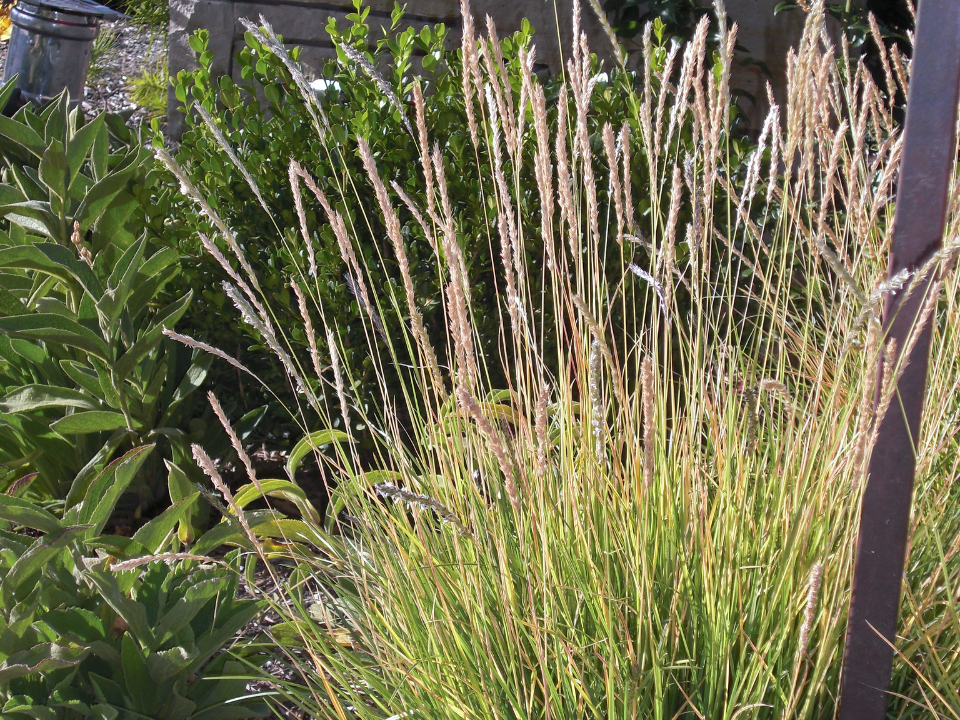
Autumn Moor Grass is a lesser-known ornamental grass that shines in the fall and cooler weather with its striking golden-yellow foliage. This grass typically grows between 12 and 18 inches tall, making it ideal for adding texture to borders or containers. Its fine, arching blades create a soft, flowing effect in the garden, especially as the cooler temperatures bring out its warm hues. Autumn Moor Grass thrives in full sun to partial shade, making it versatile in different light conditions.
In the fall, the grass takes on a beautiful golden color that glows in the sunlight, adding a rich contrast to the cooler season. It is a great option for smaller garden spaces or as a groundcover plant. This grass is also quite drought-tolerant once established, making it easy to maintain. Autumn Moor Grass is perfect for creating a warm, inviting glow in gardens as the weather turns cooler.
Prairie Dropseed (Sporobolus heterolepis)
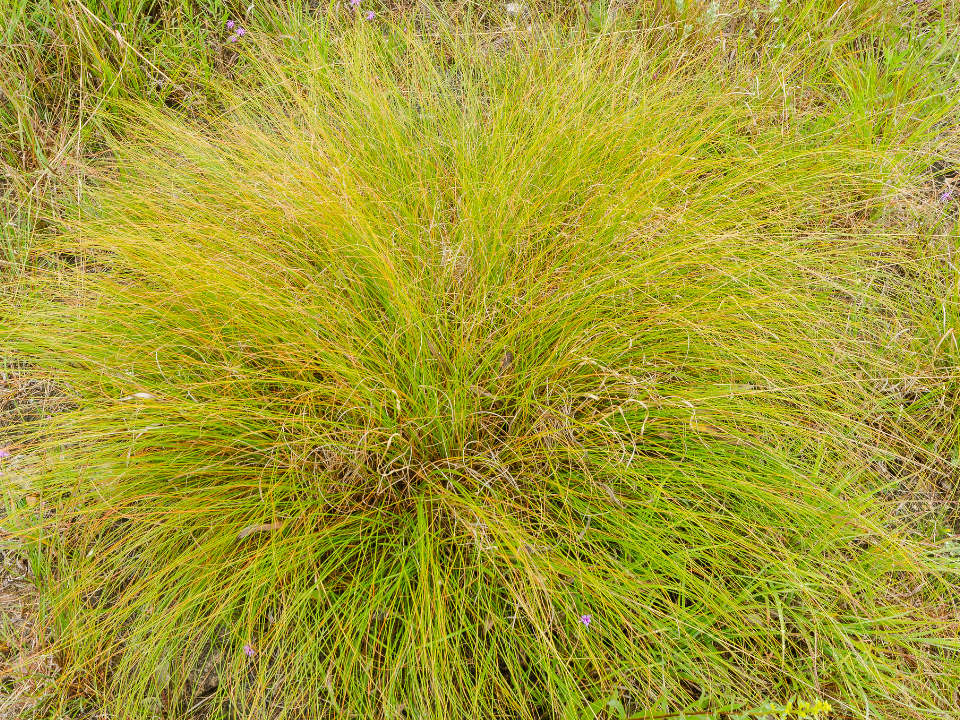
Prairie Dropseed is a native ornamental grass known for its fine, thread-like blades and delicate, airy appearance. This grass grows to about 2 to 3 feet tall and forms a neat, compact clump that adds elegance to the garden. In cooler weather, its green foliage transitions to golden-yellow hues, glowing beautifully in the sunlight. Prairie Dropseed thrives in full sun and dry, well-drained soil, making it perfect for low-maintenance landscaping.
The grass produces small, fragrant flowers in late summer that are particularly attractive to pollinators. As fall approaches, the plant’s fine-textured blades take on a soft golden glow that creates a warm, inviting atmosphere. Prairie Dropseed is also an excellent choice for wildlife gardens, providing habitat for small birds and insects. Its fine texture and glowing color make it a perfect addition to any garden seeking charm and movement throughout the fall and winter months.
This article originally appeared on Avocadu.
